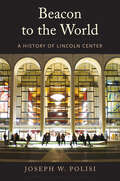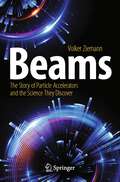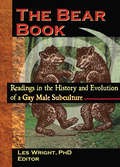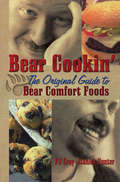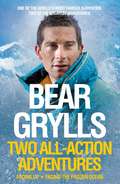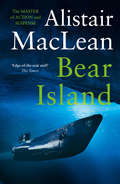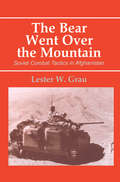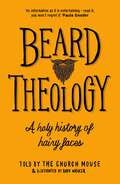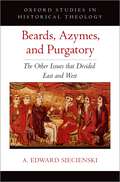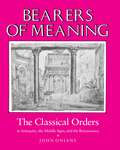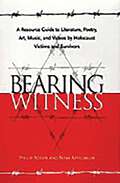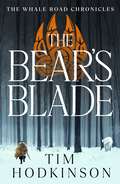- Table View
- List View
Beacon to the World: A History of Lincoln Center
by Joseph W PolisiA comprehensive history of the creation and growth of Lincoln Center, exploring the interconnections between politicians, financiers, and performing artists In this comprehensive history of Lincoln Center for the Performing Arts, longtime Juilliard president Joseph Polisi guides us through the complex convergence of the worlds of politics, finance, and the performing arts throughout the years of the Center’s history, including the roles played by Robert Moses, John D. Rockefeller 3rd, Leonard Bernstein, William Schuman, Elia Kazan, Joseph Papp, Alice Tully, Beverly Sills, and many others. Polisi’s book explores the social and political environment during the Center’s history, reflecting the growth and evolution of the performing arts in America from its post–World War II roots to the present day of global interaction. The history of the birth and growth of this unique institution is a story of determination, economic acumen, political machinations, artistic innovations, and above all the strong belief that the arts are at the center of the fabric of American society and that they should be supported and embraced by all citizens.
Beams: The Story of Particle Accelerators and the Science They Discover (Copernicus Books)
by Volker ZiemannThis book describes and explains the world of particle accelerators and the physics they study. The presentation is non-technical (E=mc2 is the only equation!) and the prose accessible. By following the co-evolution of particle accelerators and particle physics, readers will learn why the accelerators are built, how they work, and what "results" they produce. The book highlights the great ideas (e.g. synchrotron) and technological advances (superconducting magnets) that boosted the potential of accelerators and led to new discoveries, eventually resulting in the standard model of particle physics. Many concepts are illustrated with figures derived from three-dimensional models; these include theaccelerators, detectors, and particles. Background information about the main protagonists, along with pointers to further reading, e.g. from "Scientific American," are provided in endnotes.
The Bear Book: Readings in the History and Evolution of a Gay Male Subculture
by Les WrightThe Bear Book brings together an impressive range of bear--usually big, hairy men who favor full-face beards and prefer to wear jeans and flannel shirts--viewpoints to explore this unique social and cultural phenomenon that stretches from America to western Europe to Australia! On the personal level, you learn what beardom means to different people in their daily lives, and on a broader level, its cultural implications for not only the gay community, but also society as a whole. As this book moves across the wide spectrum of bear identities, you learn about the defining forces of identity, the significance of differences among masculinities, and the shapings of the bear movement from different viewpoints.The Bear Book is the first compilation of sociological and cultural analytical investigations of the contemporary gay bear phenomenon. To this end, Editor Les Wright brings together both objective and subjective viewpoints to create a forum where bears can speak for themselves. Through their voices, you’ll learn about: bears and sexual identity gay male iconography socializing on the Internet sexual politics (gender, class, “looks-ism,” and body image) gay mass media, the single most powerful force in the current construction of ”bears” bears, power, and glamor bear-as-image vs. bear-as-attitudeGays, lesbians, lesbigay scholars, bears, and social scientists are sure to find The Bear Book thought-provoking and insightful as it broaches questions such as: Are bears caught up in a utopian-romantic impulse to reinvent themselves? What was radical lesbianism&’s impact on the bear movement? To what extent are bears only another group of exploited consumers in a fragmented market system? And, is it possible to establish social liberation through enslavement to your sexual passions? For both your pleasure and your education, The Bear Book examines nearly every corner of beardom, including bear history, identity, social spaces, iconography, and its constituency abroad.
The Bear Book: Readings in the History and Evolution of a Gay Male Subculture
by Les WrightThe Bear Book brings together an impressive range of bear--usually big, hairy men who favor full-face beards and prefer to wear jeans and flannel shirts--viewpoints to explore this unique social and cultural phenomenon that stretches from America to western Europe to Australia! On the personal level, you learn what beardom means to different people in their daily lives, and on a broader level, its cultural implications for not only the gay community, but also society as a whole. As this book moves across the wide spectrum of bear identities, you learn about the defining forces of identity, the significance of differences among masculinities, and the shapings of the bear movement from different viewpoints.The Bear Book is the first compilation of sociological and cultural analytical investigations of the contemporary gay bear phenomenon. To this end, Editor Les Wright brings together both objective and subjective viewpoints to create a forum where bears can speak for themselves. Through their voices, you’ll learn about: bears and sexual identity gay male iconography socializing on the Internet sexual politics (gender, class, “looks-ism,” and body image) gay mass media, the single most powerful force in the current construction of ”bears” bears, power, and glamor bear-as-image vs. bear-as-attitudeGays, lesbians, lesbigay scholars, bears, and social scientists are sure to find The Bear Book thought-provoking and insightful as it broaches questions such as: Are bears caught up in a utopian-romantic impulse to reinvent themselves? What was radical lesbianism&’s impact on the bear movement? To what extent are bears only another group of exploited consumers in a fragmented market system? And, is it possible to establish social liberation through enslavement to your sexual passions? For both your pleasure and your education, The Bear Book examines nearly every corner of beardom, including bear history, identity, social spaces, iconography, and its constituency abroad.
Bear Cookin': The Original Guide to Bear Comfort Foods
by PJ Gray Stanley HunterPlease DO feed the bears! Bear Cookin': The Original Guide to Bear Comfort Foods takes a good-natured approach to good eating, presenting home-style recipes with a light-hearted touch. Aimed at husky, hairy gay men-and their admirers-the book presents convenient and satisfying recipes for anyone who loves to cook-and eat! Bear Cookin' includes helpful hints, "tributes" to favorite foods, and meal suggestions for breakfast, lunch, dinner-and everything in between-that are guaranteed to please burly bears with big appetites. From lip-smacking snacks to belt-loosening main courses, Bear Cookin&’ is stuffed with easy-to-follow recipes for the hearty and delicious comfort foods bears crave: burgers, meatloaf, biscuits with sausage gravy, pasta, potatoes, beans, muffins and bread, cheesecake, puddings and pies, and homemade ice cream. Collected from family and friends and perfect for summer picnic baskets or winter "hibernation" dinners, these filling and flavorful recipes are presented with the love for good food that makes life worth living. Bear Cookin' includes recipes for: (Touch My) Monkey Bread What-A-Crock Pot Stew What&’s It All About ... Alfredo Polar Bear Chili Fur-ocious Pot Roast and odes to the wonders of Cool Whip®, Bisquick®, and Velveeta®! Bear Cookin': The Original Guide to Bear Comfort Foods also includes serving ideas and suggestions for making the best use of your cooking utensils. This book is a wonderful addition to any kitchen-bear or otherwise!
Bear Cookin': The Original Guide to Bear Comfort Foods
by PJ Gray Stanley HunterPlease DO feed the bears! Bear Cookin': The Original Guide to Bear Comfort Foods takes a good-natured approach to good eating, presenting home-style recipes with a light-hearted touch. Aimed at husky, hairy gay men-and their admirers-the book presents convenient and satisfying recipes for anyone who loves to cook-and eat! Bear Cookin' includes helpful hints, "tributes" to favorite foods, and meal suggestions for breakfast, lunch, dinner-and everything in between-that are guaranteed to please burly bears with big appetites. From lip-smacking snacks to belt-loosening main courses, Bear Cookin&’ is stuffed with easy-to-follow recipes for the hearty and delicious comfort foods bears crave: burgers, meatloaf, biscuits with sausage gravy, pasta, potatoes, beans, muffins and bread, cheesecake, puddings and pies, and homemade ice cream. Collected from family and friends and perfect for summer picnic baskets or winter "hibernation" dinners, these filling and flavorful recipes are presented with the love for good food that makes life worth living. Bear Cookin' includes recipes for: (Touch My) Monkey Bread What-A-Crock Pot Stew What&’s It All About ... Alfredo Polar Bear Chili Fur-ocious Pot Roast and odes to the wonders of Cool Whip®, Bisquick®, and Velveeta®! Bear Cookin': The Original Guide to Bear Comfort Foods also includes serving ideas and suggestions for making the best use of your cooking utensils. This book is a wonderful addition to any kitchen-bear or otherwise!
Bear Grylls: Facing Up - Facing the Frozen Ocean
by Bear GryllsBear Grylls is one of the world's most famous survivors. Bear Grylls: Two All-Action Adventures combines two of his greatest adventures told in Facing Up and Facing the Frozen Ocean.At the age of twenty-three, Bear Grylls became one of the youngest Britons to reach the summit of Mount Everest. At extreme altitude youth holds no advantage over experience, nevertheless, only two years after breaking his back in a freefall parachuting accident, he overcame severe weather conditions, fatigue and dehydration to stand on top of the world's highest mountain. Facing Up is the story of his adventure, his courage and humour, his friendship and faith. Facing the Frozen Ocean tells of a carefully calculated attempt to complete the first unassisted crossing of the frozen north Atlantic in an open rigid inflatable boat. But this expedition became a terrifying battle against extreme elements and icebergs as large as cathedrals. Starting from the remote north Canadian coastline, Bear Grylls and his crew crossed the infamous Labrador Sea, pushed on through ice-strewn waters to Greenland and then found themselves isolated in a perfect storm 400 miles from Iceland. This is a compelling, vivid and inspirational tale.
Bear in Mind These Dead
by Susan McKay'A moving and timely work, which captures the lasting pain and grief of those who lost loved ones during the Troubles.' Eoin McHugh, Sunday IndependentNearly 4,000 people were killed during the Troubles. Susan McKay's book explores the difficult aftermath of the violence for families, friends and communities. By interviewing those who loved the missing and the dead, as well as some who narrowly survived, McKay gives a voice to those who are too often overlooked in the political histories. She has found grief and rage, as well as forgiveness. This book is a powerful and important contribution to the Northern Ireland power-sharing process. Only by confronting the brutality of the past can there be any hope that the dead may finally be laid to rest. 'An exemplary undertaking . . . a necessary book, which restores humanity to those among the dead who tend to be remembered in terms of statistics alone. Susan McKay has gone about her difficult task with bravery and finesse.' Patricia Craig, Independent'Peace can only endure if the dead can finally be laid to rest. Bear in Mind These Dead is a moving and important contribution to that process.' Derry Journal'Tremendously moving . . . Anyone who wants to understand the sectarian conflict of Northern Ireland must examine the individual tragedies that go to make up the broader narrative. This is the grim task to which McKay so admirably applies herself.' Andrew Anthony, Observer
Bear Island: Night Without End, Ice Station Zebra, Bear Island, Athabasca
by Alistair MacLeanThe classic tale of adventure and death on a mysterious Arctic island, from the acclaimed master of action and suspense.
The Bear King (Dark Age)
by James WildeBridging the gap between 'Game of Thrones' and Bernard Cornwell comes the third and final chapter in James Wilde's epic adventure of betrayal, battle and bloodshed . . .AD 375 - The Dark Age is drawing near . . .As Rome's legions abandon their forts, chaos grows on the fringes of Britannia. In the far west, the shattered forces of the House of Pendragon huddle together in order to protect the royal heir – their one beacon of hope. For Lucanus, their great war leader, is missing, presumed dead. And the people are abandoning them. For in this time of crisis, a challenger has arisen, a False King with an army swollen by a horde of bloody-thirsty barbarians desperate for vengeance.One slim hope remains for Lucanus’ band of warrior-allies, the Grim Wolves. Guided by the druid, Myrrdin, they go in search of a great treasure – a vessel that is supposedly a gift from the gods. With such an artefact in their possession, the people would surely return and rally to their cause? Success will mean a war unlike any other, a battle between two kings for a legacy that will echo down the centuries. And should they fail? Well, then all is lost.In The Bear King, James Wilde’s rousing reimagining of how the myth of King Arthur, Excalibur and Camelot rose out of the fragile pages of history reaches its shattering conclusion . . .
The Bear Pit: twisting historical thriller from the award-winning author of The Seeker (The Seeker)
by S.G. MacLean'Could challenge CJ Sansom for dominion' Sunday TimesLondon, 1656: Captain Seeker is back in the city, on the trail of an assassin preparing to strike at the heart of Oliver Cromwell's RepublicThe Commonwealth is balanced on a knife edge. Royalists and disillusioned former Parliamentarians have united against Oliver Cromwell, now a king in all but name. Three conspirators, representing these factions, plan to assassinate the Lord Protector, paving the way back to the throne for Charles Stuart once and for all.Captain Damian Seeker, meanwhile, is preoccupied by the horrifying discovery in an illegal gambling den of the body of a man ravaged by what is unmistakably a bear. Yet the bears used for baiting were all shot when the sport was banned by Cromwell. So where did this fearsome creature come from, and why would someone use it for murder?With Royalist-turned-Commonwealth-spy Thomas Faithly tracking the bear, Seeker investigates its victim. The trail leads from Kent's coffee house on Cornhill, to a German clockmaker in Clerkenwell, to the stews of Southwark, to the desolate Lambeth Marshes where no one should venture at night.When the two threads of the investigation begin to join, Seeker realises just what - and who - he is up against. The Royalists in exile have sent to London their finest mind and greatest fighter, a man who will stop at nothing to ensure the Restoration. Has Seeker finally met his match?
The Bear Watches the Dragon: Russia's Perceptions of China and the Evolution of Russian-Chinese Relations Since the Eighteenth Century
by Alexander LukinChina and Russia, two giants dominating the Eurasian landmass, share a history of understanding and misunderstanding whose nuances are not well appreciated by outsiders. In his interpretation of this relationship from the Russian point of view, Alexander Lukin shows how over the course of three centuries China has seemed alternately to threaten, mystify, imitate, mirror, and rival its northern neighbor. Lukin traces not only the changing dynamics of Russian-Chinese relations but the ways in which Russia's images of China more profoundly reflected Russia's self-perception and its perceptions of the West as well. As both Russia and China take distinctive approaches to political and economic development and integration in the twenty-first century global economy, this reinterpretation of their relationship is timely and valuable not only to historians but to all students of international affairs.
The Bear Watches the Dragon: Russia's Perceptions of China and the Evolution of Russian-Chinese Relations Since the Eighteenth Century
by Alexander LukinChina and Russia, two giants dominating the Eurasian landmass, share a history of understanding and misunderstanding whose nuances are not well appreciated by outsiders. In his interpretation of this relationship from the Russian point of view, Alexander Lukin shows how over the course of three centuries China has seemed alternately to threaten, mystify, imitate, mirror, and rival its northern neighbor. Lukin traces not only the changing dynamics of Russian-Chinese relations but the ways in which Russia's images of China more profoundly reflected Russia's self-perception and its perceptions of the West as well. As both Russia and China take distinctive approaches to political and economic development and integration in the twenty-first century global economy, this reinterpretation of their relationship is timely and valuable not only to historians but to all students of international affairs.
The Bear Went Over the Mountain: Soviet Combat Tactics in Afghanistan
by Lester W. GrauThis collection of vignettes was written by Soviet junior officers describing their experiences fighting the Mujahideen guerillas. It is not a history of the Soviet-Afghan war, but snapshots of combat as seen by young platoon leaders, company commanders, battalion commanders and military advisers.
The Bear Went Over the Mountain: Soviet Combat Tactics in Afghanistan
by Lester W. GrauThis collection of vignettes was written by Soviet junior officers describing their experiences fighting the Mujahideen guerillas. It is not a history of the Soviet-Afghan war, but snapshots of combat as seen by young platoon leaders, company commanders, battalion commanders and military advisers.
The Bear Who Went To War (PDF)
by Alan Pollock Bryony ThomsonBased on the true story of the Iranian bear cub adopted by Polish soldiers in World War 2, who travelled with them across Europe, carried armaments at the Battle of Montecassino and finally found a safe home with them in Scotland.
Beard Theology: A holy history of hairy faces
by The Church Mouse'As informative as it is entertaining - read it, you won't regret it' Paula GooderBeards have had cultural and religious significance for thousands of years. A fascinating story is to be told of the religious significance of beards from the ancient civilisations to today. This book will survey beard theology from ancient Egypt, Greece, Rome and Mesopotamia, to the Jews of Jesus's day and through to the early Church fathers who strongly promoted the beard, the Latin church which outlawed it leading up to and after the Great Schism of 1054. We will pursue the story of the protestant reformers and leaders of the evangelical revival of the 19th century all had plenty to say about the beard.This largely untold and intriguing story of the religious significance of beards and will containa series of entertaining true historical stories, such as the cardinal who lost the papacy due to his beard, the female pharaoh who wore the fake beard and how beards were cited in the papal bull of excommunication that formalised the split of the Eastern and Western churches in the great schism.As well as providing a unique historical narrative, it also provides a subtle basis for reflection on current theological disputes and debates, gently inviting you to consider what parallels there areto the historical theological disputes which today seem trivial but caused heated passions in their day. It will entertain and inform in equal measure.'A profound exploration of the way beliefs turn to rules . . . smart, funny and absolutely fascinating' Cole Moreton
Beards, Azymes, and Purgatory: The Other Issues that Divided East and West (OXFORD STU IN HISTORICAL THEOLOGY SERIES)
by A. Edward SiecienskiThe Catholic and Orthodox churches have been divided for nearly a thousand years. The issues that divide them are weighty matters of theology, from a dispute over the Nicene Creed to the question of the authority of the Pope. But while these issues are cited as the most important reasons for the split, they were not necessarily the issues that caused it. In Beards, Azymes, and Purgatory A. Edward Siecienski argues that other, seemingly minor issues also played a significant role in the schism. Although rarely included in modern-day ecumenical dialogues, for centuries these "other issues"--the beardlessness of the Latin clergy, the Western use of unleavened bread in the Eucharist, and the doctrine of Purgatory--were among the most frequently cited reasons for the dispute between East and West. Disagreements about bread, beards, and the state of souls after death may not, at first, appear to be church-dividing issues, but they are the nevertheless among the reasons why the church today is divided. This was a schism over azymes long before it was a schism over the primacy of the Bishop of Rome, and the beardlessness of the Latin clergy was cited as a reason for breaking communion with the Latin Church prior to all the subsequent arguments about the wording of the Nicene Creed. To understand the schism between East and West, Siecienski contends, we must grasp not only the reasons it remains, but also the reasons it began.
Beards, Azymes, and Purgatory: The Other Issues that Divided East and West (OXFORD STU IN HISTORICAL THEOLOGY SERIES)
by A. Edward SiecienskiThe Catholic and Orthodox churches have been divided for nearly a thousand years. The issues that divide them are weighty matters of theology, from a dispute over the Nicene Creed to the question of the authority of the Pope. But while these issues are cited as the most important reasons for the split, they were not necessarily the issues that caused it. In Beards, Azymes, and Purgatory A. Edward Siecienski argues that other, seemingly minor issues also played a significant role in the schism. Although rarely included in modern-day ecumenical dialogues, for centuries these "other issues"--the beardlessness of the Latin clergy, the Western use of unleavened bread in the Eucharist, and the doctrine of Purgatory--were among the most frequently cited reasons for the dispute between East and West. Disagreements about bread, beards, and the state of souls after death may not, at first, appear to be church-dividing issues, but they are the nevertheless among the reasons why the church today is divided. This was a schism over azymes long before it was a schism over the primacy of the Bishop of Rome, and the beardlessness of the Latin clergy was cited as a reason for breaking communion with the Latin Church prior to all the subsequent arguments about the wording of the Nicene Creed. To understand the schism between East and West, Siecienski contends, we must grasp not only the reasons it remains, but also the reasons it began.
Bearers of Meaning: The Classical Orders in Antiquity, the Middle Ages, and the Renaissance
by John OniansFor all those interested in the relationship between ideas and the built environment, John Onians provides a lively illustrated account of the range of meanings that Western culture has assigned to the Classical orders. Onians shows that during the 2,000 years from their first appearance in ancient Greece through their codification in Renaissance Italy, the orders--the columns and capitals known as Doric, Ionic, Corinthian, Tuscan, and Composite--were made to serve expressive purposes, engaging the viewer in a continuing visual dialogue.
Bearing Witness: Ruth Harrison and British Farm Animal Welfare (1920–2000) (Palgrave Studies in the History of Social Movements)
by Claas KirchhelleThis open access book is the biography of one of Britain’s foremost animal welfare campaigners and of the world of activism, science, and politics she inhabited. In 1964, Ruth Harrison’s bestseller Animal Machines triggered a gear change in modern animal protection by popularising the term ‘factory farming’ alongside a new way of thinking about animal welfare. Here, historian Claas Kirchhelle explores Harrison’s avant-garde upbringing, Quakerism, and how animal welfare debates were linked to concerns about the wider ethical and environmental trajectories of post-war Britain. Breaking the myth of Harrison as a one-hit wonder, Kirchhelle reconstructs Harrison’s 46 years of campaigning and the rapid transformation of welfare politics and science during this time. Exacerbated by Harrison’s own actions, the decades after 1964 saw a polarisation of animalpolitics, a professionalisation of British activism, and the rise of a new animal welfare science. Harrison’s belief in incremental reform allowed her to form ties to leading scientists but alienated her from more radical campaigners. Many of her 1964 demands gradually became part of mainstream politics. However, farm animal welfare’s increasing marketisation has also led to a relative divorce from the wider agenda of social improvement that Harrison once bore witness to. This is the first book to cast light on the interlinked histories of British farm animal welfare activism, science, and legislation. Its unique scope allows it to go beyond existing accounts of modern British animal welfare and will be of interest to those interested in animal welfare, environmentalism, and the behavioural sciences.
Bearing Witness: Prison Stories from a Woman's Fight Against Fascism
by Mercedes Núñez Targa‘Thanks to this superb translation, English-language readers finally have access to a classic work of prison literature that has played a major role in keeping alive the memory of the crimes of Franco’—Paul Preston, historian and author of Architects of Terror‘A humane, vivid and painfully honest testimony of incarceration under two fascist systems that flares up an urgent signal in our moment of clear and present danger’—Helen Graham, Professor Emeritus, Royal HollowayThis is the story of a woman who resisted two totalitarian regimes. Mercedes Núñez Targa was a Catalan socialist imprisoned under the Franco dictatorship. On her release, she joined the French Resistance and was subsequently arrested by the German Gestapo.This is her story in her own words. Her vivid writings about her time in Ventas prison in Madrid reveal the contrast between the horrific conditions in the prison and the prisoners’ incredible spirit and endurance. Later, writing about her confinement in a Nazi concentration camp, she describes the violence of the SS guards and her comrades’ own pitiful conditions, showing how the appalling treatment only united the women further. This is the first time her story has been available in English, her words providing a unique opportunity to further understand female solidarity and resistance against the dreadful power of fascism. Mercedes Núñez Targa (1911–1986) was born in Barcelona. She became an active member of the Unified Socialist Party of Catalonia from an early age. Her outrage at Franco’s military coup in 1936 galvanised her commitment to the fight against fascism. Arrested in 1939, she spent most of the next six years in fascist prisons in Spain and Nazi Germany. Freed at the end of the war, Núñez Targa continued to campaign against the Franco regime while in exile, and finally returned to Spain after Franco’s death. She died in Spain in 1986.
Bearing Witness: A Resource Guide to Literature, Poetry, Art, Music, and Videos by Holocaust Victims and Survivors
by Philip Rosen Nina ApfelbaumThis resource guide will help readers locate over 800 first-person accounts, fiction, poetry, art interpretations, and music by Holocaust victims and survivors, as well as videos relating the testimony and experiences of Holocaust survivors. In addition to the few well-known writers, artists, and musicians whose work so eloquently captures their experience during the Holocaust, this guide will introduce the reader to the lives and work of more than 250 lesser known or unrecognized writers, artists, and musicians from many countries who documented their experience of persecution at the hands of the Nazis. This guide will help students gain firsthand knowledge of what it was like to experience the Holocaust and how ordinary people coped and created art and meaning from the ashes of their lives.The entry on each writer, artist, and musician features a biographical sketch and list of his or her works, with full bibliographic data. Entries on literature and videos are annotated and include recommendations for age-appropriateness. The work is divided into five parts: writers of memoirs, diaries and fiction; poets; artists; composers and musicians; and videos that feature testimony by survivors. Each part features an introductory overview of the artists and art created in that genre out of Holocaust experience. Title, artist/writer, and nationality indexes will help the reader select materials, and an index organized by age-appropriate levels will help teachers and librarians to select literature and videos for students.
The Bear's Blade (The Whale Road Chronicles)
by Tim HodkinsonEinar must take back control of his destiny in this thrilling Viking adventure. How do you defeat the undefeatable? 935 AD, Norway. Recovering from horrendous injuries, Einar finds himself unable to fight. He is not strong enough to defeat his rival, Eirik, who has seized Orkney despite Einar being the rightful Jarl.Eirik's men soon raid the Norwegian coast, led by a warrior called the Bear. Cruel and ferocious, the Bear possesses a legendary blade – one that gives him a skill in battle that cannot be matched. Such an extraordinary sword could be key to Einar's plans – but first he and the Wolf Coats must contend with the Bear himself.Caught between old foes and new ones, Einar must use all his wits to survive. But is a man who cannot wield a sword capable of being a true Viking warrior?Reviews for Tim Hodkinson: 'Will appeal to fans of Bernard Cornwell, George R.R. Martin, and especially Theodore Brun' Historical Novel Society 'A gripping action adventure like the sagas of old' Melisende's Library 'An excellently written page-turner' Historical Writers Association
The Beast (Timberline Books)
by Benjamin B. Lindsey Harvey J. O'HigginsJudge Benjamin Barr Lindsey’s exposé of big business’s influence on Colorado and Denver politics, a best seller when it was originally published in 1911, is now back in print. The Beast reveals the plight of working-class Denver citizens—in particular those Denver youths who ended up in Lindsey’s court day after day. These encounters led him to create the juvenile court, one of the first courts in the country set up to deal specifically with young delinquents. In addition, Lindsey exposes the darker side of many well-known figures in Colorado history, including Mayor Robert W. Speer, Governor Henry Augustus Buchtel, Will Evans, and many others. When first published, The Beast was considered every bit the equal Upton Sinclair’s The Jungle and sold over 500,000 copies. More than just a fascinating slice of Denver history, this book—and Lindsey’s court— offered widespread social change in the United States.
